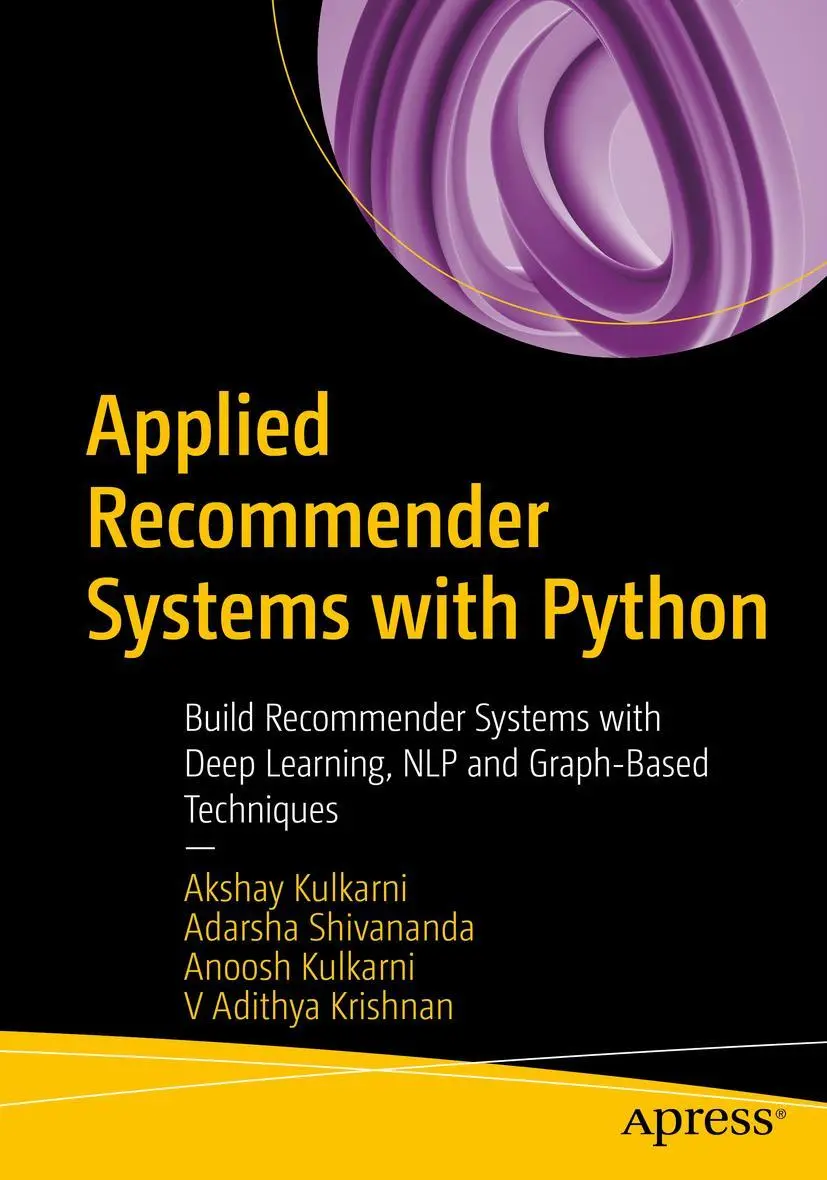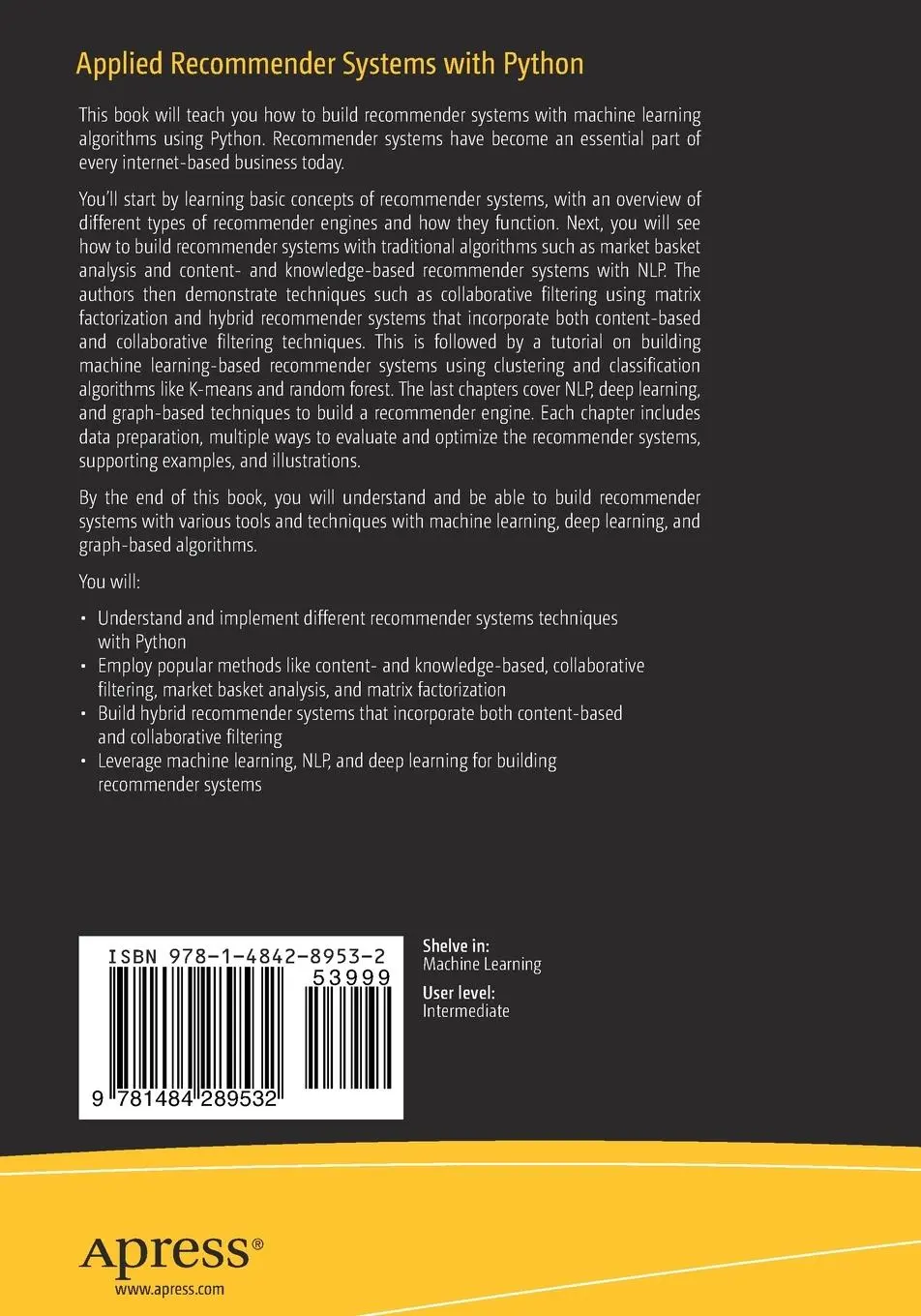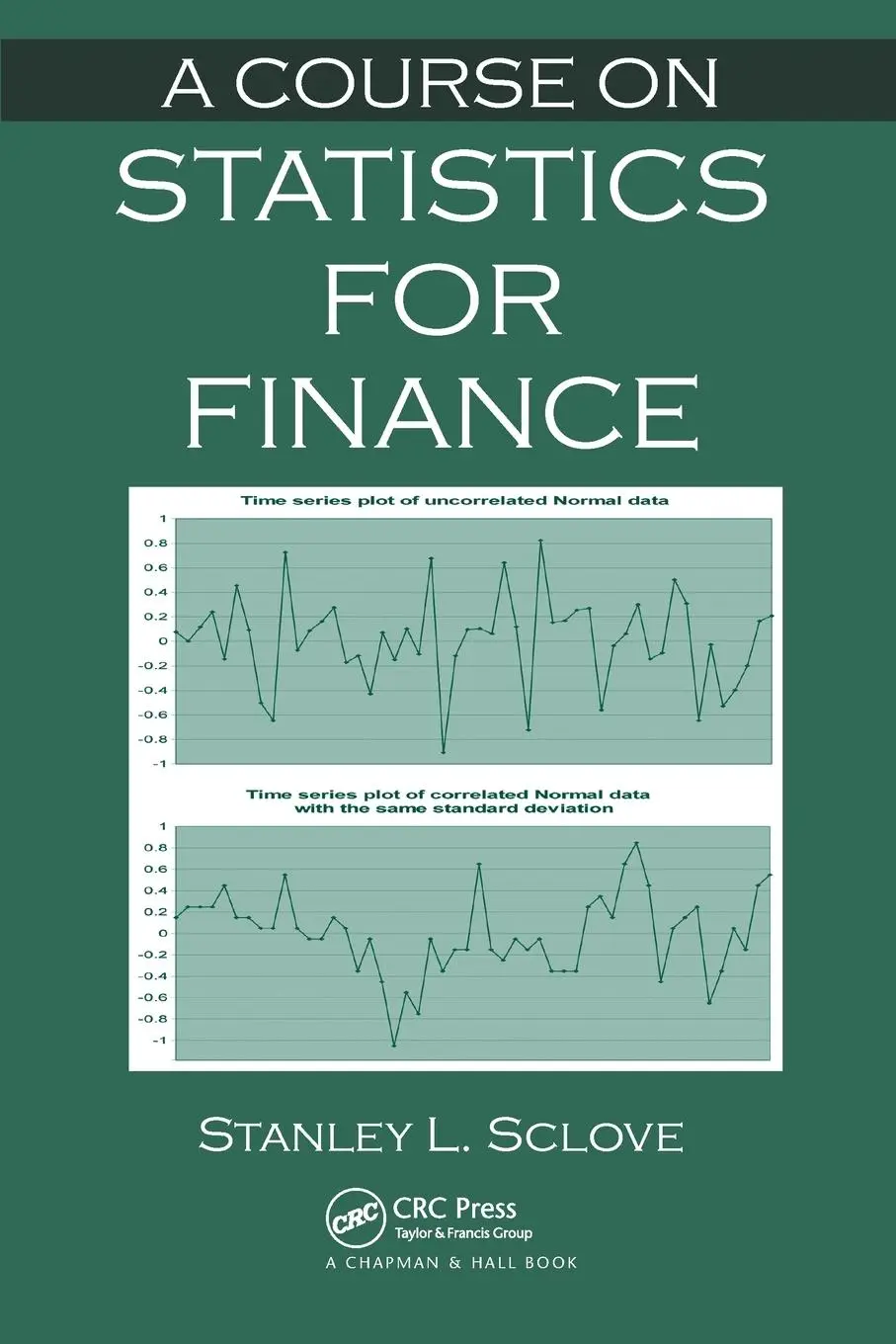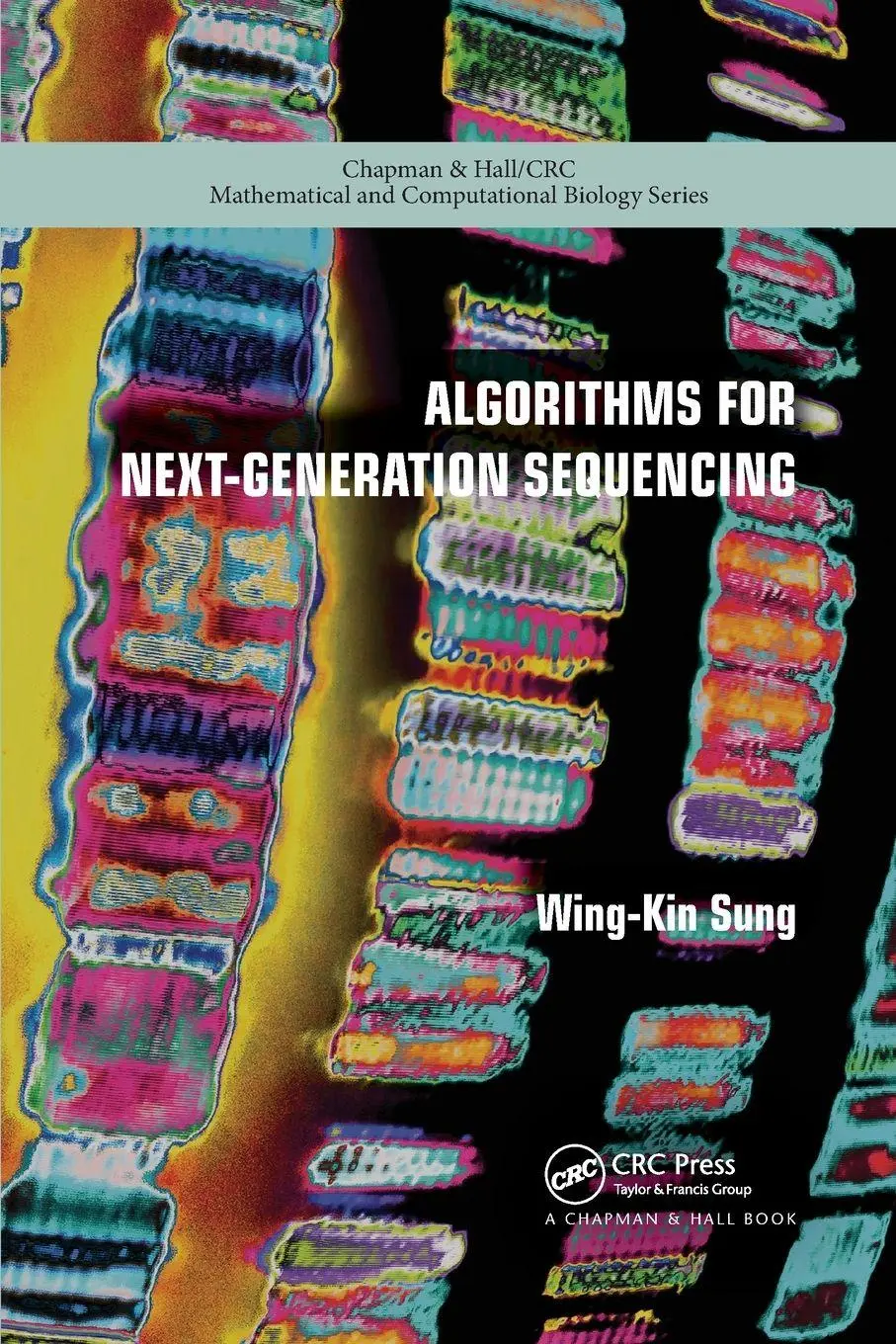Dekorationsartikel gehören nicht zum Leistungsumfang.
Sprache:
Englisch
48,14 €
Versandkostenfrei per Post / DHL
Aktuell nicht verfügbar
Kategorien:
Beschreibung
Chapter 1: Introduction to Recommender Systems.- Chapter 2: Association Rule Mining.- Chapter 3: Content and Knowledge-Based Recommender System.- Chapter 4: Collaborative Filtering using KNN.- Chapter 5: Collaborative Filtering Using Matrix Factorization, SVD and ALS.- Chapter 6: Hybrid Recommender System.- Chapter 7: Clustering Algorithm-Based Recommender System.- Chapter 8: Classification Algorithm-Based Recommender System.- Chapter 9: Deep Learning and NLP Based Recommender System.- Chapter 10: Graph-Based Recommender System. - Chapter 11: Emerging Areas and Techniques in Recommender System.
Chapter 1: Introduction to Recommender Systems.- Chapter 2: Association Rule Mining.- Chapter 3: Content and Knowledge-Based Recommender System.- Chapter 4: Collaborative Filtering using KNN.- Chapter 5: Collaborative Filtering Using Matrix Factorization, SVD and ALS.- Chapter 6: Hybrid Recommender System.- Chapter 7: Clustering Algorithm-Based Recommender System.- Chapter 8: Classification Algorithm-Based Recommender System.- Chapter 9: Deep Learning and NLP Based Recommender System.- Chapter 10: Graph-Based Recommender System. - Chapter 11: Emerging Areas and Techniques in Recommender System.
Über den Autor
Akshay R Kulkarni is an AI and machine learning evangelist and a thought leader. He has consulted several Fortune 500 and global enterprises to drive AI and data science-led strategic transformations. He is a Google developer, Author, and a regular speaker at major AI and data science conferences including Strata, O'Reilly AI Conf, and GIDS. He is a visiting faculty member for some of the top graduate institutes in India. In 2019, he has been also featured as one of the top 40 under 40 Data Scientists in India. In his spare time, he enjoys reading, writing, coding, and helping aspiring data scientists. He lives in Bangalore with his family.
Adarsha Shivananda is Data science and MLOps Leader. He is working on creating world-class MLOps capabilities to ensure continuous value delivery from AI. He aims to build a pool of exceptional data scientists within and outside of the organization to solve problems through training programs, and always wants to stay ahead of the curve. He has worked extensively in the pharma, healthcare, CPG, retail, and marketing domains. He lives in Bangalore and loves to read and teach data science.
Anoosh Kulkarni is a data scientist and an AI consultant. He has worked with global clients across multiple domains and helped them solve their business problems using machine learning (ML), natural language processing (NLP), and deep learning. Anoosh is passionate about guiding and mentoring people in their data science journey. He leads data science/machine learning meet-ups and helps aspiring data scientists navigate their careers. He also conducts ML/AI workshops at universities and is actively involved in conducting webinars, talks, and sessions on AI and data science. He lives in Bangalore with his family.
V Adithya Krishnan is a data scientist and ML Ops Engineer. He has worked with various global clients across multiple domains and helped them to solve their business problems extensively using advanced Machine learning (ML) applications. He has experience across multiple fields of AI-ML, including, Time-series forecasting, Deep Learning, NLP, ML Operations, Image processing, and data analytics. Presently, he is developing a state-of-the-art value observability suite for models in production, which includes continuous model and data monitoring along with the business value realized. He also published a paper at an IEEE conference, "Deep Learning Based Approach for Range Estimation", written in collaboration with the DRDO. He lives in Chennai with his family.
Adarsha Shivananda is Data science and MLOps Leader. He is working on creating world-class MLOps capabilities to ensure continuous value delivery from AI. He aims to build a pool of exceptional data scientists within and outside of the organization to solve problems through training programs, and always wants to stay ahead of the curve. He has worked extensively in the pharma, healthcare, CPG, retail, and marketing domains. He lives in Bangalore and loves to read and teach data science.
Anoosh Kulkarni is a data scientist and an AI consultant. He has worked with global clients across multiple domains and helped them solve their business problems using machine learning (ML), natural language processing (NLP), and deep learning. Anoosh is passionate about guiding and mentoring people in their data science journey. He leads data science/machine learning meet-ups and helps aspiring data scientists navigate their careers. He also conducts ML/AI workshops at universities and is actively involved in conducting webinars, talks, and sessions on AI and data science. He lives in Bangalore with his family.
V Adithya Krishnan is a data scientist and ML Ops Engineer. He has worked with various global clients across multiple domains and helped them to solve their business problems extensively using advanced Machine learning (ML) applications. He has experience across multiple fields of AI-ML, including, Time-series forecasting, Deep Learning, NLP, ML Operations, Image processing, and data analytics. Presently, he is developing a state-of-the-art value observability suite for models in production, which includes continuous model and data monitoring along with the business value realized. He also published a paper at an IEEE conference, "Deep Learning Based Approach for Range Estimation", written in collaboration with the DRDO. He lives in Chennai with his family.
Zusammenfassung
Covers hybrid recommender systems, deep learning-based techniques, and graph-based recommender systems
Includes step-by-step implementation of all techniques using Python with real-world examples
Explains end-to-end pipeline from defining the approach, pre-processing data, and building models
Inhaltsverzeichnis
Chapter 1: Introduction to Recommender Systems.- Chapter 2: Association Rule Mining.- Chapter 3: Content and Knowledge-Based Recommender System.- Chapter 4: Collaborative Filtering using KNN.- Chapter 5: Collaborative Filtering Using Matrix Factorization, SVD and ALS.- Chapter 6: Hybrid Recommender System.- Chapter 7: Clustering Algorithm-Based Recommender System.- Chapter 8: Classification Algorithm-Based Recommender System.- Chapter 9: Deep Learning and NLP Based Recommender System.- Chapter 10: Graph-Based Recommender System. - Chapter 11: Emerging Areas and Techniques in Recommender System.
Details
| Erscheinungsjahr: | 2022 |
|---|---|
| Genre: | Importe, Informatik |
| Rubrik: | Naturwissenschaften & Technik |
| Medium: | Taschenbuch |
| Inhalt: |
xiii
248 S. 185 s/w Illustr. 248 p. 185 illus. |
| ISBN-13: | 9781484289532 |
| ISBN-10: | 1484289536 |
| Sprache: | Englisch |
| Einband: | Kartoniert / Broschiert |
| Autor: |
Kulkarni, Akshay
Shivananda, Adarsha Kulkarni, Anoosh Krishnan, V Adithya |
| Auflage: | First Edition |
| Hersteller: |
Apress
Apress L.P. |
| Verantwortliche Person für die EU: | APress in Springer Science + Business Media, Heidelberger Platz 3, D-14197 Berlin, juergen.hartmann@springer.com |
| Maße: | 254 x 178 x 15 mm |
| Von/Mit: | Akshay Kulkarni (u. a.) |
| Erscheinungsdatum: | 22.11.2022 |
| Gewicht: | 0,503 kg |




